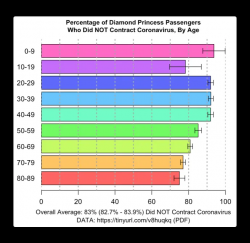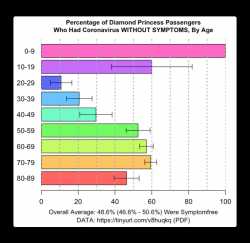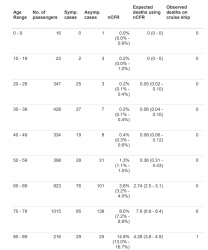First, notice the error bars? Very large for the 10-19 group and quite large for the 0-9 group, except in the second graph where the occurrence was 100%. I imagine the large margin of error is due to low sample numbers. An occurrence of 100% doesn't mean much if there was only one case.
Looking at the margin of error, the results for ages 0-50 in the first group could be statistically almost a dead-heat.
"If the figures can be relied on" - I'm sure it was a good study, so we can rely on the figures, but transferring the conclusions from a single sample group, with such large margin of error in the school-aged group, to the question of opening schools in Australia is a VERY long bow to draw I reckon.
EDIT: here are the numbers in each age group, from the pre-print paper. Very small numbers in the younger age-groups (ONE asympt case out of ONE case in the 0-9 age group and 3 asympt out of 5 cases 10-19!!! ) ... as I thought.
View attachment 217607



















